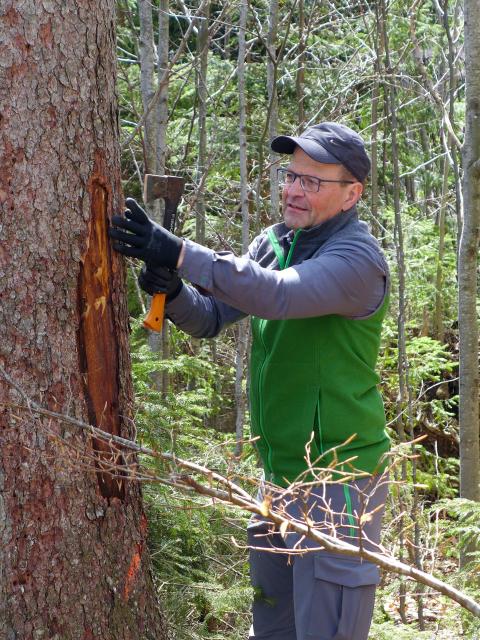Long-term observation
in the Kalkalpen National Park
The permanent monitoring of the current state, development and change of species, biocenosis, habitats and ecosystems is a central part of the work of a national park. Since the national park should be as undisturbed as possible for natural development, it also offers ideal spaces for long-term observations.
Practice often requires scientific argumentation, either for concrete projects such as ongoing population controls of endangered species or as a basis for natural space management. Scientific research primarily serves to implement the conservation goals of the respective national park, and monitoring acts as an ongoing monitoring of success. Monitoring can identify negative developments at an early stage and make any management measures more efficient.
In addition to science-oriented research, social sciences, economics and humanities also have their place. Questions about the acceptance of a national park by the population, effects on regional development, cultural and political processes, the development of visitor flows, etc. are important for the development of a national park.

Selected Monitoring Programs
Population control for the development of the spruce bark beetle
Population control for the development of hoofed game populations
Population control forest regeneration (control fences)
since 1993
Meteorological program: climate and weather
since 1993
Integrated Monitoring – Long-term monitoring of ecosystems
since 1995
Counting of visitors to the Kalkalpen National Park
since 1995
Karst spring monitoring
since 1996
Natural Area Inventory
since 1999
Monitoring and supporting the lynx population
since 2001
Management Success Monitoring Brown Trout
since 2005
Capercaillie population control
since 2008
Breeding success records of golden eagles
since 2009
Otter population control




